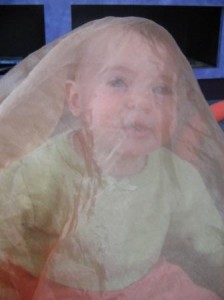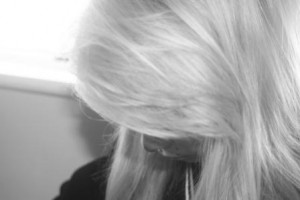This is a very simple post addressed to fellow writers, illustrators and publishers especially for younger children.
Where are all the girls?
Seriously.
I looked in ‘Carousel’ – these are my stats for the Spring 2012 edition.
- Babies Books: 9 books reviewed , 2 male central characters & 7 neutral.
- Toddlers: 8 books reviewed, 5 male central characters, 1 female and 2 neutral
- Picture Books: 15 reviewed, 8 male central characters, 5 female and 2 neutral
- First Steps: 8 books reviewed, 6 male central characters, 1 female and 1 neutral
- Reading Alone: 14 reviews, 5 male central characters, 4 female & 5 neutral
- Reading with Confidence: 13 reviews, 5 male leads, 6 female & 2 neutral
Out of 67 books, 31 had male leads, 19 had either a neutral or an equal balance, and only 17 had female central characters. That gives 46% male (OK) 28% neither/both & 25% female. Take out the books that had an equal ratio or featured neither and this remains:
65% male to 35% female central characters
Now I have no wish to criticise ‘Carousel’ – it reports what there is – and it might be just a statistical blip. So I thought I’d better cross-check with Amazon.
I won’t bore you with the full breakdown but here’s a summary:
- out of the top 30 best-sellers from 0-8, 14 featured male characters, 11 were neutral or balanced, and 5 had female leads.
- 47% male, 37 % neutral & 16% female
- 74% male to 26% female (if you take out the neutral books)
I did the same with ‘The Book People’:
- out of the 60 Top Ten books promoted in ranges from Babies through to 9+, 32 featured male central characters, 14 were neutral & 14 female
- 70% versus 30%
What on earth is going on?
To my shame, this is a rough transcript of a conversation betwen me and an agent for children’s writers.
‘I’m stuck – need to choose between a boy or a girl as my central character in my 9+ fantasy adventure – which would you suggest?’‘Well, if you really can’t choose any other way, then the boy commercially speaking.’‘Oh. Why?’‘Girls will read books with a boy central character- but boys won’t read it if it’s a girl.‘ ( my emphasis)
So all my readers that have anything to do with books – what on earth do we do about this?




The Hunger Games is doing pretty well. Outside of books, Buffy the Vampire Slayer was popular with both genders. The Twilight series had, (and continues to have), male fans. ‘The Secret Garden’ is still in print, as is all of ‘Anne of Green Gables’ and ‘What Katy Did’.
With 2 out of the 3 major young adult fiction franchises of the last ten years featuring female leads, I wonder if this agent friend is living in a cave.
Lots of men/boys are reading these books. I think this ‘boys won’t read about girls’ is actually rubbish. If the girl is written as a well rounded character, who is dealing with exciting stuff, boys will read it. If she is doing ‘typically’ female pursuits, then they won’t read.
Perhaps this is actually a good argument against old-fashioned ‘Babysitter Club’ type novels. They no longer sell because they are old fashioned and a ‘zombie genre’.
Thank you for your comment, Rebecca. What you say is decidedly valid in the YA and tweens context – and in that age- range a good deal of boys have abandoned fiction or turned to adult writers. My point was about the younger end – small children seem to be presented with a world where animals are assumed to be male, girls exist in a pink and sparkly ghetto & the adventurous characters are generally male.
Hi Philippa
Having just written a 9-11 year old book with female characters I can polish my halo. But that said as a primary teacher I know it’s unlikely boys would ever read it.
So here’s the sad facts from schools. In the infants what gender the main character is tends not to matter but as the class gets into the juniors it begins to. When choosing a book that will engage the whole class it almost always means a male lead. Boys do not seem to want to engage with female characters, girls do not discriminate in the same way. I am as guilty as the next teacher when it comes to choosing books based on what I know the boys will be prepared to spend time on.
HOWEVER… some good news, have had a chat with my husband who is also a teacher and we have come up with some exceptions. ‘Takashita Demons’, ‘Northern Lights’ and ‘the Firework Makers Daughter’ all have female leads and seem to engage all children in a class. That said, these are very strong female characters, who are out of their typical stereotype and battling with all kinds of negative forces.
One I always like to throw in with a class of 8/9 year olds is Bill’s New Frock, get’s some great gender debate going.
George xxx
Thanks for the comment George – it will not surprise you to know I’m in favour of strong female characters who don’t conform to a pink & frilly stereotype!
There was an interesting Twitter discussion on this a month or so ago, initiated, I seem to remember, by Kate Wilson of Nosy Crow. As she pointed out, even the non-human (and often unnamed) characters in picture books tend to be male. Having said that, I’ve never really thought of the Hungry Caterpillar as being either male or female – to me it’s just a caterpillar. But Kate definitely had a good point.
Good point Elli.
I do wonder if it’s subliminal and whether that matters. Certainly there is no earthly reason for creatures to be gendered so frequently as male.
Thanks for commenting.
Is it deliberate? I do hope not. the problem is a random survey like that wouldn’t take into account how relevant story was to the sex of the protagonist.
I see your point Candy, but I took quite a bit of time analysing three different sources and several age-groups in each – well over a hundred and fifty different books. I can’t see that all the ones with male central characters had to have ‘boys/male animals.
In some ways I think it’s worse that it’s unintentional: girls only have a shadowy presence at best – and that’s often pink & twinkly.
Thank you for commenting.